

Technical Information
Manufacturer: Poyasakai, Kariansk, Karyan Union
Years of Development: December 7, 1984 (Cormack-Matsuzaka MC-20V), May 24. 1985 (JV.53A)
Year of Rollout: June 28, 1987 (JV.53C and so on), June 21, 2004 (JV.53G Kai)
Desired Role: Attack, maritime strike fighter, close air support for the Marines, optional multi-role capability
Status: In service
Primary operators: Karyan Self Defense Force (KSDF) Special Defense Force - Strike Support Force Wing 001, Royal Fabellan Marines Aeronautical Division, Royal Odrasean Marine Corps, Imperial Arsean Navy Aviation Wing, Royal Lisean Navy Air Wing
Produced: 1985-1994 (JV.53A/B/C/D), 1995-present (JV.53E/F), 2004-present (JV.53G Kai)
Number built: 220 (all variants)
Weapons amount: 16 pylons (if using with 4-hardpoint pylon), 8 pylons (without 4-hardpoint pylon), 6 bombs on bomb bay
Powerplant: 1x Tchesal-Rolls Royce Pegasus Alpha 115-2A vectored-thrust engine for lift an cruise, 1x Tchesal VT10 turbofan engine for lift assistance (JV.53G Kai)
Max Top Speed: 850mph (1368kph, Mach 1.1 light supersonic speed)
Brief Information
The PoiyaYudatsi JV.53 Fighting Harrier (MAI designation: Izumo, namesake IJN Izumo) is a transonic multi-role strike fighter capable of vertical or short takeoff and landing (V/STOL), loosely based off the Harrier Jump Jet family. Currently, she is in service with the Karyan Self Defense Force (KSDF) Special Defense Force - Strike Support Force Wing, the Royal Fabellan Marines Aeronautical Division, the Royal Odrasean Marine Corps' Air Support Squadrons, Imperial Arsean Navy's Naval Aviation Wing, and the Royal Lisean Navy's Naval Air Wing.
A hybrid development between the real-world Harrier Jump Jet and the Yak-38 Forger and originally co-developed by Cormack and Matsuzaka Corporation, she is considered as one of Karya's successful operational VTOL aircraft to date, which also led to the exports to other countries.
And if not mistaken, she is one of the first VTOL aircraft to use a bomb bay - a signature component for PoiyaYudatsi's strike fighter lineup. This helped the expeditionary missions during the Terror War - mostly carrying out airstrikes against opponent countries. She also was responsible on bombing the Satanist militia areas during the First Modern Crusade.
Shown here is the JV.53G Kai variant - a better improvement over the older JV.53 variants, with more hardpoint support, targeting pod capability, better avionics and a more powerful Tchesal-Rolls Royce Pegasus Alpha engine, derived from the Pegasus engine itself. Some air forces are interested for the use of maritime strike and reconnaisance, therefore the Kai was being suggested to them.
The name, Fighting Harrier is her semi-official moniker, due to the plane having a similar Harrier Jump Jet layout (or rather, a strikingly same layout), but has a bomb bay for added versatility.
History
Development
In December 7, 1984, Cormack, with participation with Matsuzaka Corporation studied and developed a VTOL-capable attack fighter.
It's features were taken and inspired from the real-world Harrier Jump Jet, with such external and internal components designed by Cormack Aerospace and Matsuzaka Corporation respectively. Let's just say that British Aerospace OR McDonnell Douglas shared the common principle of the Jump Jet to Cormack, too. Known before as the MC-20V VTOL experimental testbed for research, PoiyaYudatsi became interested in developing their VTOL aircraft derived from the MC-20V airframe. The MC-20V was powered with one Rolls Royce Pegasus, and two Rolls Royce liftjets on the forward fuselage. Design evaluations were being passed to the MAI, and was evaluated as Ready and Air-Worthy, in order to offer to some countries.
However, the Karyan Union would not operate much VTOL fighters because of government measures, but they may operate them for special expeditionary missions. While Karya is partially interested with the development of the VTOL fighter, PoiyaYudatsi itself started the JV.53 program.
Finalized evaluations of the requirements were sent to Poyasakai, and the MC-20V was being tested once again by Karyan test pilots; after a set of evaluations, it passed the requirements for each navy force's landing helicopter dock and assault ships. Fabella of course, would also use them for the HMFS Inmaculada-class aviation battlecruisers.
Cormack and Matsuzaka turned in to Poyasakai in order to have full ownership to cooperate with building the JV.53, and design changes occured:
The JV.53 to be assisted by only ONE Tchesal VT10 turbofan engine; should comply to fuel efficiency
She will get a bomb bay to store six bombs
A stronger landing gear, even with the same Harrier layout
Support for a radar and targeting suite
Future multi-role capabilities
Then at July 7, 1987, the JV.53 rolled out into production for each Navy and the Marines respectively - Karya exclusively assigned them for the KSDF's Special Defense Forces. She is essentially the Harrier - yet with slightly advanced improvisations, lift engine support, and added versatility. With each variant in succession, internals were improved, and the support for multirole missions is possibly 80% done, due to her desired role of ground attack. Currently, every JV.53E/F variant currently in service are designed to land in amphibious assault ships; Fabella most likely operates them to land at the HMFS Saint Pedro Calungsod-class landing helicopter docks and the HMFS Saint Ursula-class landing helicopter assault ships.
JV.53G Kai
In 2002, the Armed Forces Modernization firm came into action - with older aircraft retired, and the drastic reduce of VTOL aircraft, the Fabellans needed more VTOL fighters for their expeditionary missions, as well as other naval forces would need. PoiyaYudatsi came up with the Kai variant as a larger improvement over the previous variants. This set includes a number of improvements:
A more powerful Tchesal-Rolls Royce Pegasus Alpha 115 engine, reaching upto light supersonic speeds (transonic in Fabellan measurement)
Improved avionics with a glass cockpit
Targeting pod support for ranged attack
Support for faster weapon turnaround
Better integrated targeting system
Support for integrated 45mm TKsk-G45-11 autocannon
After flight tests in 2003, the JV.53G Kai rolled out in 2004, as an improvement for their aviation fleet with the Royal Fabellan Marines, and the KSDF Self Defense Force's StSFW-001. Production of the E/F is still ongoing with the Kai variants. She soon will be participate in such wars against terrorism, some conflicts, or the Modern Crusades.
Controls

An Izumo Kai taking off vertically from USS Enterprise
VTOL Mode
Vertical Takeoff - Your plane has to start on the ground. Activate AG1 for VTOL mode and gyro controls - 4 nozzle exhausts point downwards, top front intake hatch opens for the lift engine, and flaps are deployed afterwards (funky tree inputs used). Set your throttle to 50%, and your plane should lift from the ground vertically. Hover throttle should be 40-50%, so adjust as you are hovering each direction using slight adjustments with throttle, and roll/pitch/yaw controls as usual for a Harrier. Transitioning to forward flight should be smooth; as you set your VTOL slider to 50% or half down or full slider down (throttle must be 60%+), your plane should go forward slowly until it reaches its desired speed. You may deactivate AG1 once the plane starts to go faster in conventional flight.
Short Takeoff - AG1 should be activated, VTOL slider should be full down, and throttle at 50-60% power. This should be done in an aircraft carrier or so.
Vertical Landing - On air, your plane must be around 300 or 200mph, and your VTOL slider should be full down: then activate AG1, and take control of your speed - you may slighly VTOL UP (around 50%) and the nozzles will point front a little bit, pitch down as you are losing speed, and the throttle should be adjusted at 20 to 35% because level hover throttle is between 40-50%. You plane should descend to the ground VERTICALLY; make a feel when you are dropping fast, and take advantage of your throttle. Make sure to have a smooth touchdown, as usual.
Activation Groups
AG1 to activate VTOL mode - airbrakes deployed, flaps down, nozzles down, and front intake hatch open + RCN and gyro leveling
AG2 for weapons, and AG3 for bomb bay doors
AG5 for airborne levelling
The rest have none, obviously
Side Notes
I personally thank BogdanX for helping me with the drag, and giving me tips on how I improve on my next creations. Be there any advice, you may add me on Discord (main profile) or comment down below. As always Stay Safe, and GOD bless you. Aim high, comrades!

Nipah~
Specifications
Spotlights
- masotan15 5.4 years ago
General Characteristics
- Predecessor PoiyaYudatsi JV.53G Izumo Kai
- Created On Android
- Wingspan 61.9ft (18.9m)
- Length 85.1ft (25.9m)
- Height 25.9ft (7.9m)
- Empty Weight 3,478lbs (1,577kg)
- Loaded Weight 42,290lbs (19,182kg)
Performance
- Power/Weight Ratio 9.884
- Wing Loading 48.2lbs/ft2 (235.6kg/m2)
- Wing Area 876.6ft2 (81.4m2)
- Drag Points 3482
Parts
- Number of Parts 417
- Control Surfaces 9
- Performance Cost 2,152

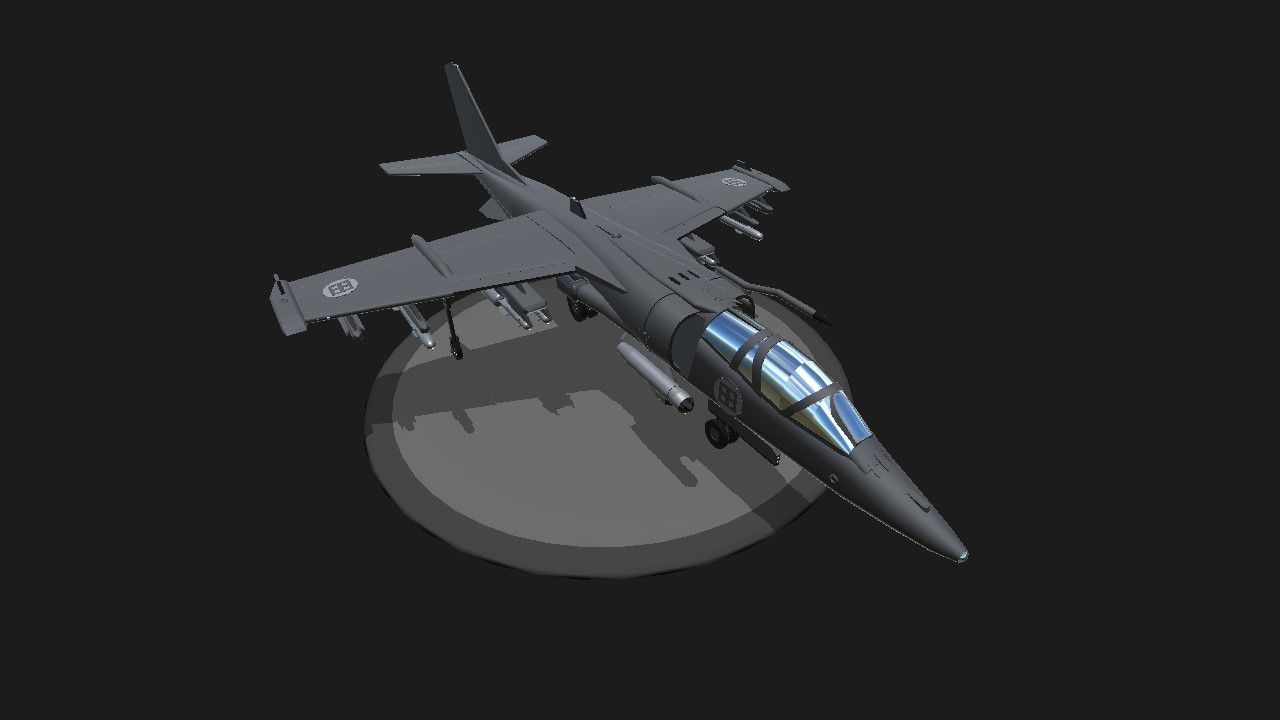
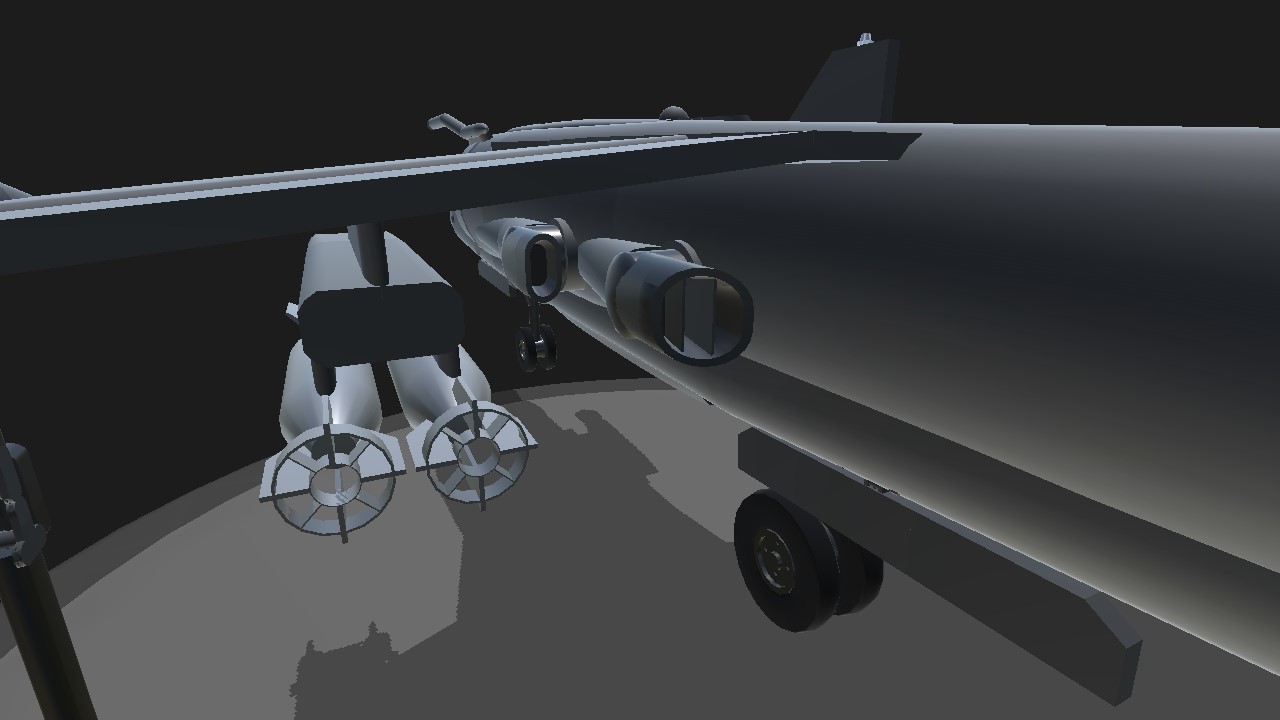
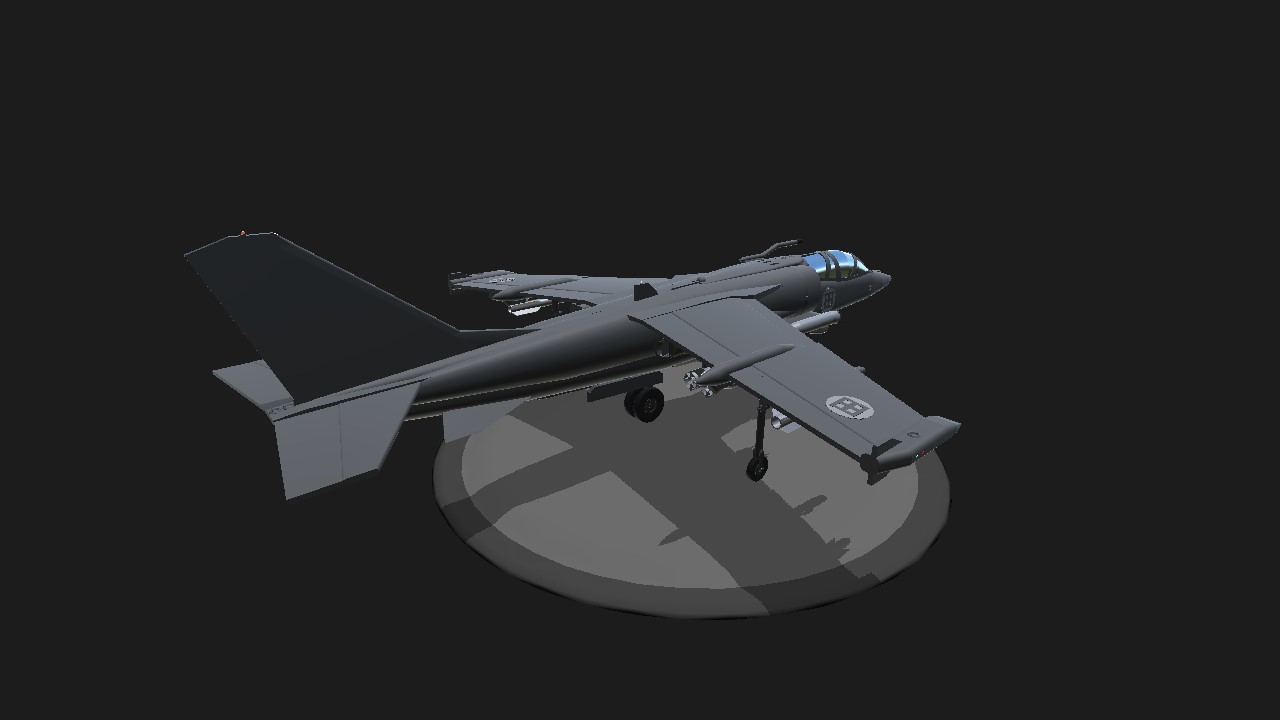
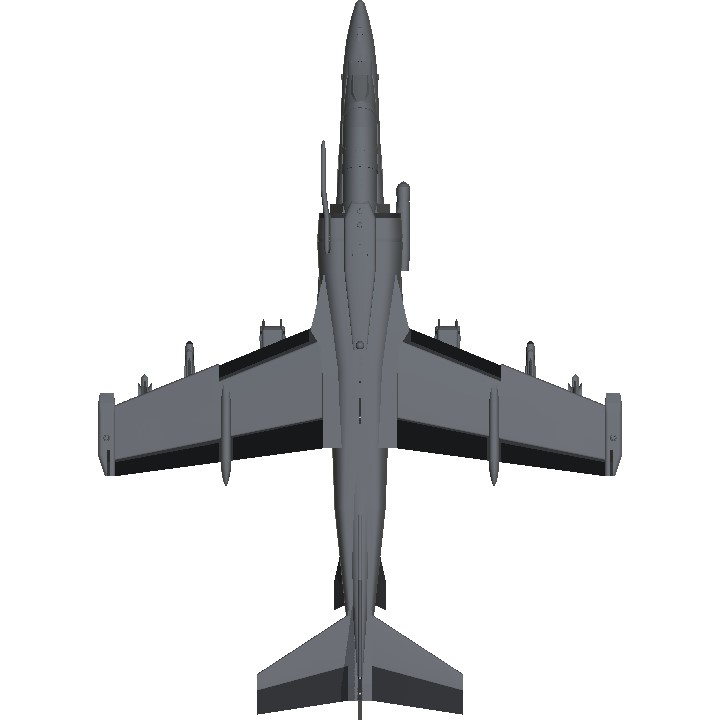
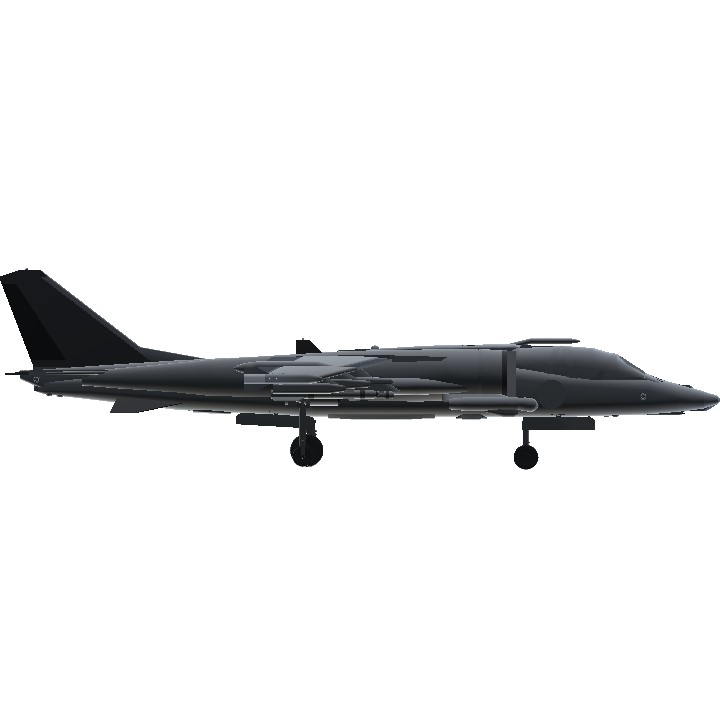
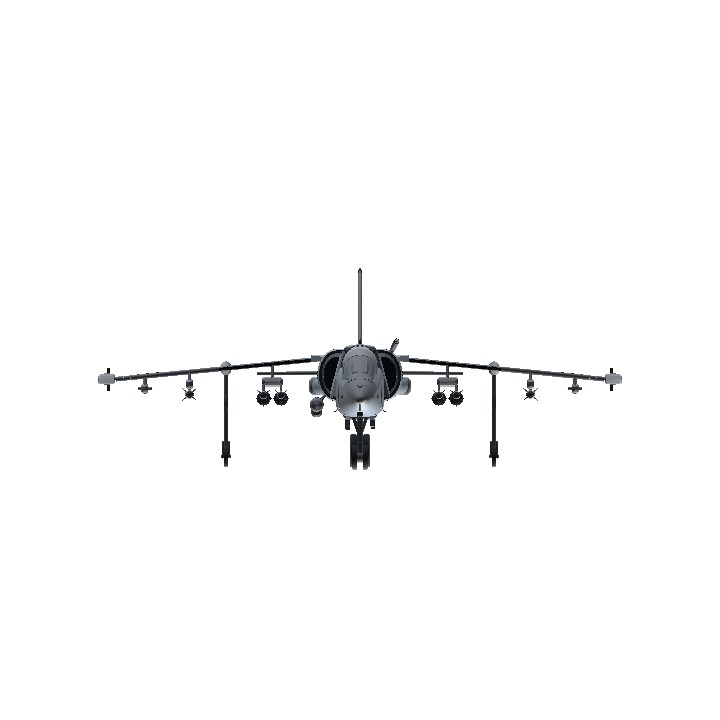
20 UPVOTES!!! THANK YOU ALL
Upvote 20
@ALRX always welcome
@MBR6753 ok, i might then, thanks!
@ALRX P.S. you may like make your own variant for it
@ALRX Oooooo thanks
this is interesting!
@BogdanX Thank you very muchhh
@xXRaindropXx Thanks
crazy!!
really cool, i can tell you put a lot of effort into this, great job
@masotan15
Yes yes, my GREATEST accomplishment
Thats alot of parts
@Quackie
@masotan15
@Darkhound